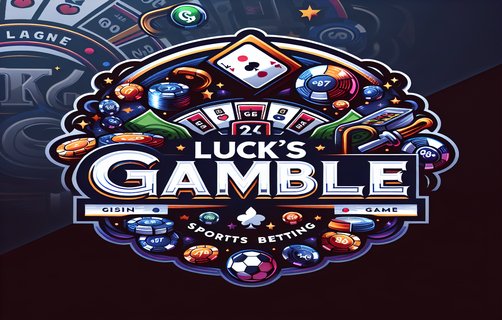Mastering Rummy: A Detailed Exploration of Game Dynamics
रम्मी में महारत: खेल की गतिशीलता का विस्तृत अन्वेषण
Rummy is a classic card game enjoyed by millions globally, distinguished by its strategic depth and social engagement. Among the various facets that contribute to its enduring appeal, the symmetrical board design stands out, creating an equal playing field that promotes fairness and enhances the visual aesthetic of the game. This design facilitates clarity in gameplay, allowing participants to quickly grasp the current state of play while minimizing confusion that can arise from asymmetric layouts. The uniformity of the board also plays a critical role in leveling the competitive experience, ensuring that all players feel equally invested and engaged in the unfolding game.

Engagement is another crucial element that defines the excitement of Rummy. Players often immerse themselves deeply in the game, forming strategies and predicting opponents' moves. The social context of Rummy also amplifies engagement since it is typically played in groups, fostering communication and sometimes leading to heated rivalries. The integration of psychological tactics—such as bluffing, deception, and reading your opponents—adds layers of complexity that heighten engagement and challenge players mentally.
In Rummy, the role of the minister, or the community card, cannot be overlooked. This card impacts the strategic decisions players make significantly, as it influences the melds and sets a player can potentially create. Strategic use of the minister can change the trajectory of the game, transforming an otherwise losing position into a winning strategy. The effective interplay between the players’ hands and the minister exemplifies how collaborative and competitive elements coexist within Rummy.
Understanding luck management rules is essential. Unlike many card games where luck predominates, Rummy requires players to manage their luck actively by making informed decisions based on available cards and opponents' potential moves. The server's deck introduces an element of uncertainty, but skilled players know how to navigate this unpredictability by shifting strategies. By employing luck management, players can mitigate the random elements of the game and position themselves advantageously.
While Rummy is definitely a strategic game, luck challenges also come into play, which adds an exciting dynamic. A well-timed card draw can dramatically alter the state of the game, underscoring that while skill is critical, the element of chance can never be fully removed. Players must learn to adapt to these luck challenges, making immediate tactical adjustments based on the evolving game landscape.
Furthermore, the turn ordersheet provides a structured approach to gameplay, ensuring a seamless flow and clear understanding of who plays when. This structure not only enhances the overall player experience but also allows strategy to build over time, as players can anticipate forthcoming moves and adjust their tactics accordingly. By combining these elements—symmetrical board design, engagement, luck management, the role of the minister, and structured turn orders—Rummy transcends mere luck to become a game of strategy and social interaction that continues to captivate players around the world.
रम्मी एक经典 कार्ड खेल है जिसे दुनिया भर में लाखों लोग आनंद लेते हैं, जो इसके रणनीतिक गहराई और सामाजिक सगाई से अलग होता है। इसके दीर्घकालिक आकर्षण में योगदान देने वाले विभिन्न पहलुओं में, सममित बोर्ड डिजाइन सबसे प्रमुख है, जो एक समान खेल क्षेत्र बनाता है जो निष्पक्षता को बढ़ावा देता है और खेल के दृश्य सौंदर्य को बढ़ाता है। यह डिजाइन खेल में स्पष्टता की सुविधा प्रदान करता है, जिससे प्रतिभागियों को खेल की वर्तमान स्थिति को जल्दी समझने में मदद मिलती है जबकि विषम लेआउट से उत्पन्न भ्रम को न्यूनतम करता है। बोर्ड की समानता भी प्रतिस्पर्धात्मक अनुभव को समतल करने में महत्वपूर्ण भूमिका निभाती है, यह सुनिश्चित करती है कि सभी खिलाड़ी गेम के प्रगति में समान रूप से निवेशित और संलग्न महसूस करें।
सगाई (Engagement) रम्मी की पहचान निर्धारित करने वाला एक अन्य महत्वपूर्ण तत्व है। खिलाड़ी अक्सर खेल में गहराई से डूब जाते हैं, रणनीतियाँ विकसित करते हैं और विरोधियों के कदमों की भविष्यवाणी करते हैं। रम्मी का सामाजिक संदर्भ भी सगाई को बढ़ाता है, क्योंकि इसे आमतौर पर समूह में खेला जाता है, संचार को बढ़ावा देता है और कभी-कभी गर्म मुकाबलों का नेतृत्व करता है। मनोवैज्ञानिक रणनीतियों का एकीकरण—जैसे धोखा देना, छल, और अपने विरोधियों को समझना—जटिलता की परतें जोड़ता है जो सगाई को बढ़ाती हैं और खिलाड़ियों को मानसिक रूप से चुनौती देती हैं।
रम्मी में मंत्री का रोल, या समुदाय कार्ड, अनदेखा नहीं किया जा सकता। यह कार्ड उन रणनीतिक निर्णयों पर महत्वपूर्ण प्रभाव डालता है जो खिलाड़ी बनाते हैं, क्योंकि यह उन मेल्ड्स को प्रभावित करता है और सेट करता है जो एक खिलाड़ी संभावित रूप से बना सकता है। मंत्री का रणनीतिक उपयोग खेल के मार्ग को बदल सकता है, एक अन्यथा हारने की स्थिति को विजेता रणनीति में बदल सकता है। खिलाड़ियों के हाथों और मंत्री के बीच प्रभावी इंटरप्ले दिखाता है कि कैसे सहयोगात्मक और प्रतिस्पर्धात्मक तत्व रम्मी में सह-अस्तित्व करते हैं।
भाग्य प्रबंधन नियमों को समझना आवश्यक है। कई कार्ड खेलों के विपरीत जहां भाग्य का वर्चस्व होता है, रम्मी में खिलाड़ियों को उपलब्ध कार्ड और विरोधियों के संभावित कदमों के आधार पर अपने भाग्य का सक्रिय रूप से प्रबंधन करना होता है। सर्वर का डेक एक अनिश्चितता का तत्व पेश करता है, लेकिन कौशल वाले खिलाड़ी जानते हैं कि इस अप्रत्याशितता को कैसे नेविगेट करना है। भाग्य प्रबंधन के उपयोग के माध्यम से, खिलाड़ी खेल के यादृच्छिक तत्वों को कम कर सकते हैं और अपने आप को फायदेमंद स्थिति में रख सकते हैं।
जबकि रम्मी वास्तव में एक रणनीतिक खेल है, भाग्य चुनौतियाँ भी खेल में आती हैं, जो एक रोमांचक गतिशीलता जोड़ती हैं। सही समय पर कार्ड ड्रॉ खेल की स्थिति को नाटकीय रूप से बदल सकता है, यह दिखाते हुए कि जबकि कौशल महत्वपूर्ण है, मौके का तत्व कभी पूरी तरह से हटा नहीं जा सकता। खिलाड़ियों को इन भाग्य चुनौतियों के प्रति अनुकूलित करना सीखना चाहिए, खेल के विकसित होते परिदृश्य के आधार पर तत्काल सामरिक समायोजन करते हुए।

अतिरिक्त रूप से, टर्न ऑर्डरशीट (turn ordersheet) खेल में एक संरचित दृष्टिकोण प्रदान करती है, जो सहज प्रवाह और यह स्पष्ट समझ सुनिश्चित करती है कि कौन कब खेलता है। यह संरचना न केवल समग्र खिलाड़ी अनुभव को बढ़ाती है बल्कि रणनीति को समय के साथ बनाने की अनुमति भी देती है, क्योंकि खिलाड़ी आगे के चालों का अनुमान लगा सकते हैं और अपने रणनीतियों के अनुसार अपने कदमों को समायोजित कर सकते हैं। इन सभी तत्वों, सममित बोर्ड डिजाइन, सगाई, भाग्य प्रबंधन, मंत्री की भूमिका, और संरचित टर्न ऑर्डर को मिलाकर, रम्मी मात्र भाग्य से परे जाती है और एक ऐसे खेल में बदल जाती है जो रणनीति और सामाजिक बातचीत का मिश्रण है, जो दुनिया भर में खिलाड़ियों को कैद करता है।

comments
GameMaster99
Such an insightful analysis! I love the way you broke down the components.
RummyFanatic
I never thought about the symmetrical board design in-depth before. Great details!
StrategicPlayer
Luck management is key in Rummy. This article hits the spot.
CardQueen
Fantastic insights on the minister's role! It truly changes the game.
EngagedPlayer
This article made me rethink my strategies. Thanks for sharing!
RummyStrategist
The turn ordersheet is definitely underrated. Helps maintain the flow!